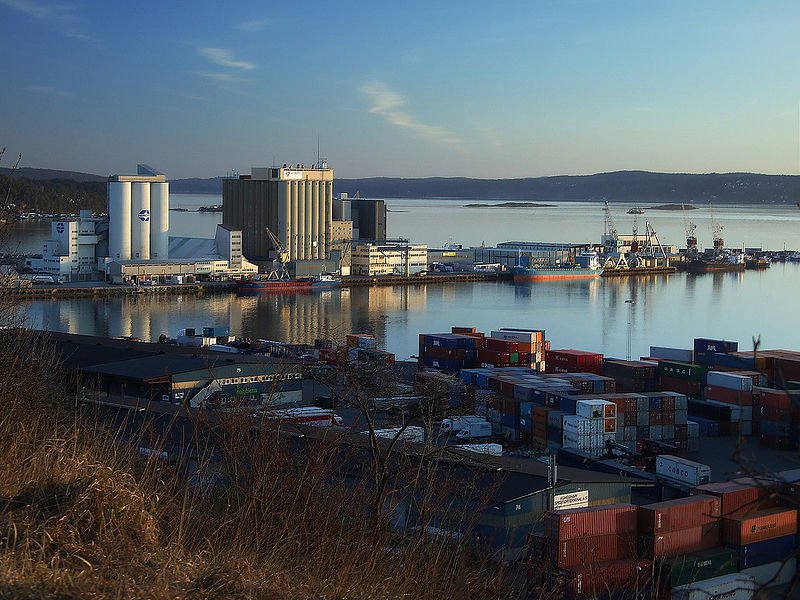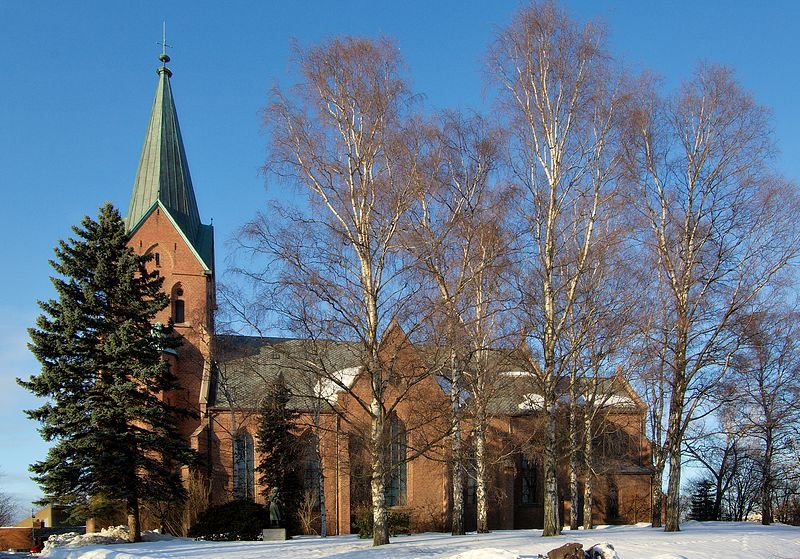 Harbor at Ekeberg, Oslo
Harbor at Ekeberg, OsloSource: https://commons.wikimedia.org/wiki/File:Sydhavna._Kongshavn_Oslo.jpg
Author: Lars Tiede

Oslo is the capital and biggest city in Norway. It is also the third largest city in Scandinavia. The city covers 454.03 sq km (175.3 sq mi) and has a population of 605,000 (2011 estimate), within a metropolitan area of 1.4 million people.
Oslo is on the southeastern part of Norway, not far from the border with Sweden. It is on the northernmost end of the Oslofjord, which is split into two parts by the Nesodden Peninsula, and surrounded by hills and mountains.
 Royal Palace of Norway, Oslo
Royal Palace of Norway, OsloSource: https://commons.wikimedia.org/wiki/File:Slottet_-_framsida_1.jpg
Author: Bjørn Erik Pedersen

Oslo experiences a humid continental climate. Its warmest months are from June to August, when average high temperatures reach above 20.11°C (68.2°F). The coldest months are January and February, when temperatures going down to -6.78°C (19.8°F). Snowfall is heaviest in February and March, with over 21.4 cm (8.43 in). Rain is heaviest in August, registering 89 mm (3.5 in).
The history of Oslo is traced back to Norse sagas, which state that King Harald Hardråde founded it in 1049. However archaeologists believe that a settlement has existed in the Oslo area earlier than 1000 AD, based on early Christian burials excavated there.
 Frogner Hovedgård, a manor in Oslo
Frogner Hovedgård, a manor in OsloSource: https://commons.wikimedia.org/wiki/File:Frogner_Hovedg%C3%A5rd_X1.JPG
Author: Kph

Oslo became a Norwegian capital for the first time when King Håkon V (1299-1319) made it his permanent residence. In the 14th century, when Norway, Sweden and Denmark were united under the Kalmar Union, the capital was moved to Copenhagen, where the king resided, and Oslo became just a provincial capital.
In 1624, a big fire destroyed most of Oslo. King Christian IV of Denmark (and Norway) ordered that it be result on the other side of the bay. He named the new settlement Christiana. It was often spelled Kristiana. It lost the position as the biggest city in Norway in the 16th century, when Bergen surpassed it in population, only to regain it in around 1850. The city reverted to its original name Oslo in 1925.
 Vestre Aker Church, Oslo
Vestre Aker Church, OsloSource: https://commons.wikimedia.org/wiki/File:Vestre_Aker_kyrkje_2.jpg
Author: Bjørn Erik Pedersen

Visiting Oslo
The Oslo Airport, Gardermoen (OSL) is the biggest airport in Norway and the second businest in the Nordic countries. The airport is a hub for Scandinavian Airlines and Norwegian Air Shuttle. It is 35 km (22 mi) from Oslo.Arriving at Oslo Airport, you have a number of options to reach downtown Oslo. The fastest is to take the high-speed train called Flytoget, which whizzes you to Oslo Central Station in 20 minutes. The tickets cost NOK 170 from the vending machines, and 200 NOK from the ticketing desk. There are also public trains by NSB to Oslo, taking about 40 minutes but costing only NOK 110. Flybussen buses connects the airport with downtown Oslo, making the journey in 45 minutes for NOK 140. Taxis cover the same distance for NOK 700+.
 View of the City Hall, left, and Akershus Fortress, right, in Oslo
View of the City Hall, left, and Akershus Fortress, right, in OsloSource: https://commons.wikimedia.org/wiki/File:Tunnels_Oslo_Port_Line.jpg
Author: Jim G

Exploring Oslo
The public transportation system of Oslo comprises the metro (called T-bane), trains, buses and trams. Each NOK 27 single-ride ticket allows you one hour of travel with unlimited transfers. There are also 24-hour pass for NOK 70, weekly pass for NOK 210 and 30-day pass for NOK 590 available at selected newsagents and 7-Eleven stalls.Places of Interest in Oslo, Norway
- Akershus Festning
- Holmenkollen
- Kirkeristen
- Opera House
- Oslo Cathedral
- Rådhuset (City Hall)
- Royal Palace
- Stortinget (Parliament)
- University of Oslo
Museums in Oslo
- Emanuel Vigeland Museum
- Henrik Ibsen Museum
- Holocaust Center
- Kon-Tiki Museum
- National Gallery
- Nobel Peace Centre
- Norwegian Maritime Museum
- Norwegian Museum of Cultural History
- Munch Museum
- Viking Ship Museum
 Latest updates on Penang Travel Tips
Latest updates on Penang Travel Tips
About this website

Thanks for reading this page. My name is Timothy Tye. My hobby is to research information about places, and share the information with people on this website. I started this website on 5 January 2003, and since then, have written about over 20,000 places, mostly in Malaysia and Singapore.
Please use the information on this page as guidance only. While I try my best to provide you information that is as accurate as I can get it to be, I do apologize for any errors. Also, as I might not be able to update some information on time, some of these pages may contain outdated information.
Copyright © 2003-2024 Timothy Tye. All Rights Reserved.


 Go Back
Go Back